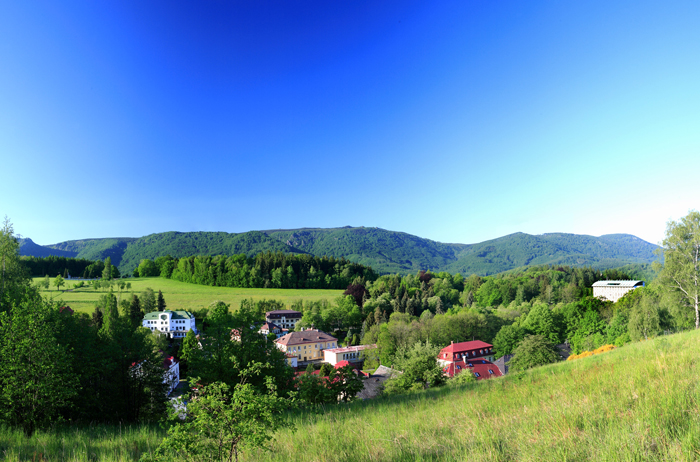
Legend about a cockerel
A local legend about a fat cockerel, or why Libverda has a cockerel in its coat of arms...
If you come to Libverda, the first thing you should do is look at the roof of the Eduard spring. There you will see a rather fetching cockerel that was, at the time I'm telling this, quite green, like the roof of the building on which he proudly stands, and of course, like the leaves of the trees in the summer, so he blended right in with all the green. Who ever saw a green cockerel? However, in the times of the Auspergs, the cockerel was faithfully dyed so that it was visible in the winter and properly in summer - as it deserves to be. That cockerel on the roof of the Eduard spring, it's not just any normal decorative cockerel. It's a memorial to the cockerel that discovered the sources of the acidic Libverda water. And it was neither green nor colourful, but above all, terribly fat.
Listen to the legendary story of how one cockerel grew fat because it was the first to have the renowned acidic Libverda water for breakfast.

-upr.jpg)
Once long, long ago, when the old border trail led through the wild, empty woods, tread only by the rangers, and there was nothing but rocks, forests, clouds, and forests with deep valleys rippling with abundant streams, bubbling like the Libverda one and wild like Štolpich, that is, in those ancient times, where Libverda is today there were only a swampy valley in which a broad fen, sometimes a swamp, stretched along the stream. Even back then, the place was the home of the "salikvarda", that is, a ranger who did not walk along the sentry border path like other rangers, but lived there permanently and provided walking border with an inn and accommodation after a tiring patrol. When the "salikvarda" settled down, he founded a small farm. No one knows any more what our ancient "salikvarda" was called. The main thing is that the first settler had a cottage, a few fields around, a meadow, a backyard, and in the yard pigs who flourished there - and lots of hens, ruled by a cockerel.
One beautiful day, the cockerel began to grow fat, as if someone had cast a spell on it. The salikvarda, his wife and children started to notice this, so they began to observe the enchanted cockerel. They watched him until they found out that the greedy rooster did not go to the stream to drink like the chickens, but to the wetland near the trail, a wetland that was highly inaccessible and overgrown with thickets of trees and bushes, where it was dangerous to go because the ground shifted and rocked under your feet. But the cockerel - as you know it can walk across mud because it's not heavy, however fat it gets. The salikvarda shook his head and wondered what sort of water it could be to make the cockerel so fat - and that wasn't all. The cockerel was growing old, but was still robust and full of life, but he wouldn't last for a hundred years, so one day he died. When the salikvarda cut him open - he stopped in amazement. His size wasn't due to fatness, but the huge size of his innards. He decided to try the water on himself. He cut his way through to the well, whose surface was exploding with large bubbles. He, too, got fat and was healthy. After a while the salikvarda could not keep the well secret, and so all the rangers went to drink from the well. They gave the place the name Libverda, and that's where the legend ends.
I cannot say if it is from the 15th or 16th century. But that's only of secondary importance. The main thing is the cockerel on the roof of the Eduard spring.
Souce: Lázně Libverda - historie a současnost perly Jizerských hor.








